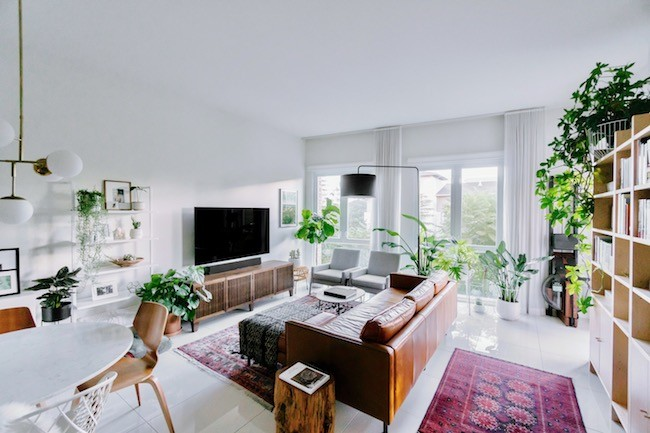The design world often looks to the latest trends and cutting-edge materials for inspiration. Yet, one of the most enduring and dynamic sources of inspiration continues to be right outside our window: nature. From the delicate veins of a leaf to the vast expanse of a starry sky, the natural world offers a limitless palette of textures, forms, and colors that can be translated into captivating interior spaces.
Embracing the Biophilic Design Trend:
Biophilic design, a concept that champions the connection between humans and nature, is experiencing a surge in popularity. This movement recognizes the inherent benefits of incorporating natural elements into our built environments, from reducing stress and boosting creativity to improving air quality and overall well-being.
Bringing the Outdoors In:
There are countless ways to integrate nature’s influence into your interior design. Start by introducing organic materials like wood, stone, and woven textiles. Rough-hewn wooden beams or polished marble countertops bring a sense of raw beauty and textural intrigue. Wicker baskets and woven rugs add warmth and earthy appeal, while linen curtains evoke the gentle sway of leaves in the breeze.
Light and Shadow Play:
Sunlight, filtered through rustling leaves or bouncing off a shimmering lake, creates a natural dance of light and shadow. Designers can mimic this effect by incorporating strategic lighting that casts soft pools of light and playful shadows. Skylights and large windows maximize natural light, while strategically placed lamps and sconces can create pockets of cozy illumination.
Nature’s Color Palette:
From the vibrant hues of a blooming meadow to the serene shades of a misty forest, nature provides an endless source of color inspiration. Earthy browns, verdant greens, and calming blues evoke the tranquility of the outdoors. Pops of bolder colors, like the crimson of ripe berries or the golden glow of a setting sun, can add accents of energy and vibrancy.
Beyond the Surface:
Nature’s influence extends beyond aesthetics. Natural elements can be incorporated into functional design features as well. Water features, like babbling fountains or small ponds, create a soothing ambiance and add the calming sound of trickling water. Plants not only purify the air but also bring life and movement to a space. Opt for low-maintenance options like succulents or air plants, or create a miniature jungle with lush greenery and vibrant blooms.
A World of Inspiration:
From the windswept dunes of a desert to the coral reefs teeming with life, every corner of the natural world offers unique design possibilities. Take inspiration from the intricate patterns of butterfly wings or the sculptural forms of desert cacti. Capture the ethereal glow of fireflies in twinkling lights or the vibrant energy of a coral reef in a colorful mosaic tile backsplash.
The Beauty of Imperfection:
Nature is rarely perfect. Trees grow at their own pace, rocks show the wear and tear of time, and flowers bloom and fade in their own seasons. This embrace of imperfection can be translated into interior design through the use of handcrafted furniture with unique grains and knots, weathered textiles showcasing their history, and natural materials that display their inherent beauty.
A Connection to Something Greater:
Ultimately, incorporating nature into interior design is not simply about aesthetics. It’s about creating a space that connects us to something larger than ourselves. By surrounding ourselves with elements of the natural world, we invite a sense of calm, inspiration, and grounding into our lives. So, open your windows, let the fresh air in, and allow the beauty and wisdom of nature to guide your next design project.
This article provides a 500-word exploration of nature’s influence on interior design, covering the biophilic design trend, practical tips for incorporating natural elements, and the deeper connection we can create with our surroundings. You can adapt and expand on this content to create a more specific piece focused on a particular aspect of nature-inspired design, such as incorporating plants, working with natural light, or designing around a specific biome.

